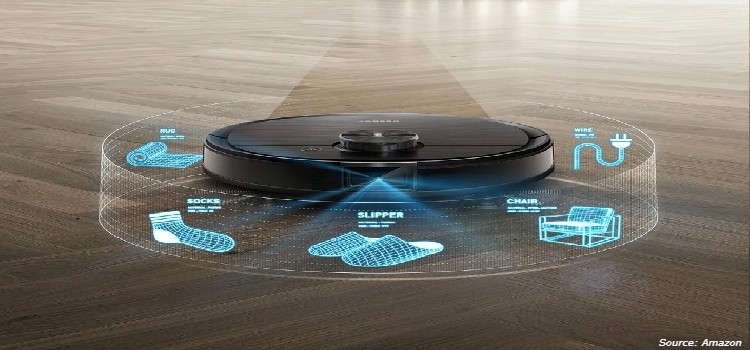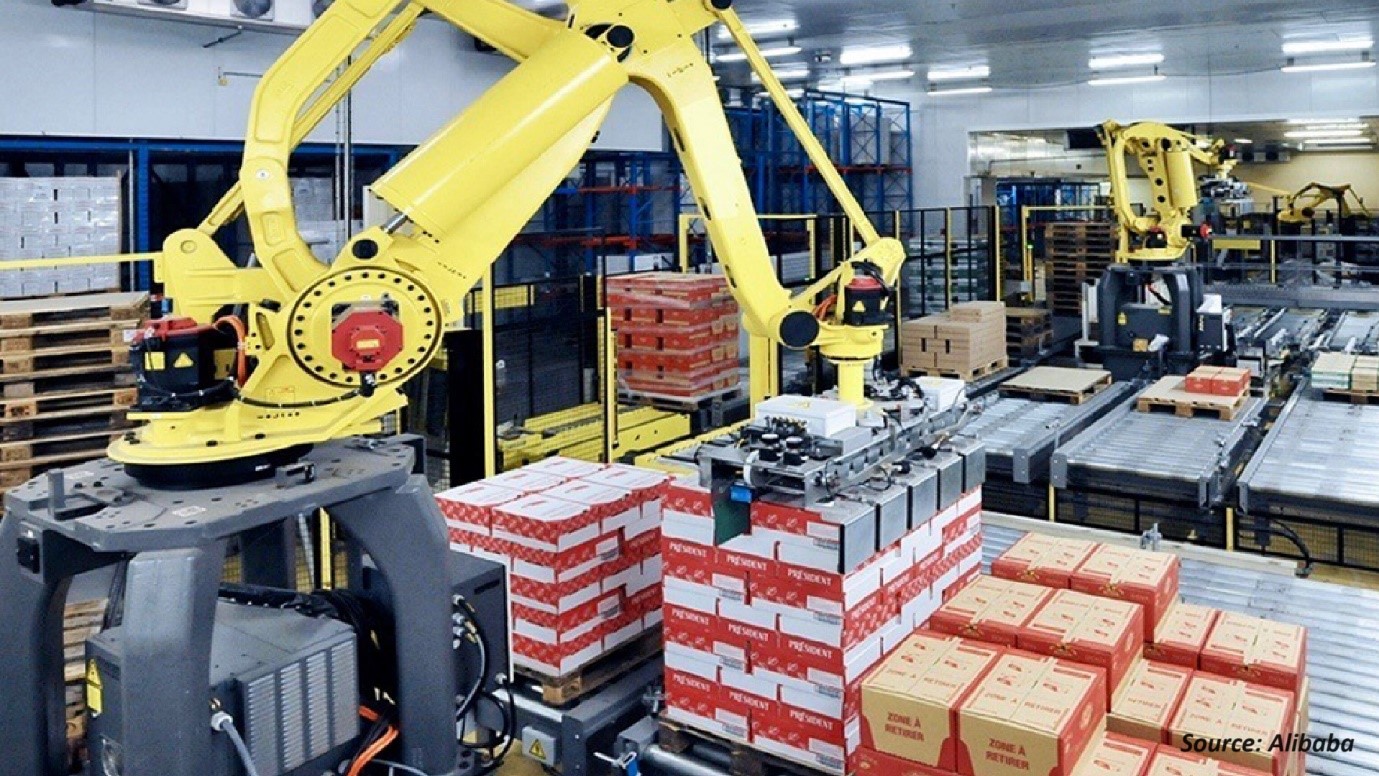
Modular Robotics Market by Type (SCARA Modular Robots, Articulated Modular Robots, Collaborative Modular Robots, Cartesian Modular Robots, Parallel Modular Robots, Others), by Payload (Upto 16 Kg, 16.1-60 Kg, 60.1-225 Kg, and More than 225 Kg), by Application (Logistics, Aerospace & Defense, Healthcare, Food & Beverages, Automotive & Transportation, Manufacturing, Media & Entertainment, and Others)–Global Opportunity Analysis and Industry Forecast, 2024–2030
Industry: ICT & Media | Publish Date: 08-Jul-2024 | No of Pages: 514 | No. of Tables: 296 | No. of Figures: 266 | Format: PDF | Report Code : N/A
Market Definition:
The Modular Robotics Market size was valued at USD 6.48 billion in 2021 and is predicted to reach USD 15.60 billion by 2030 with a CAGR of 10.3% from 2022 to 2030.
Modular robots can be defined as self-configuring robots, comprising of numerous independent units. They are able to change their geometric structure and rearrange themselves autonomously or with human intervention in order to adapt to new circumstances, perform new tasks, or recover from damage.
Modular robotic systems can be classified into several architectural groups by the geometric arrangement of their unit such as lattice, chain, hybrid and homogeneous. As compared to conventional robotic systems, Modular robots are more adaptive as their reconfiguration ability allows them to disassemble and reassemble modules or units to form new morphologies that are better suited for the task at hand.
Market Dynamics and Trends:
The increasing use of modular robots for space missions by several organizations such as NASA, ESA and Roscosmos is driving the growth of the modular robotics market. These missions require self-repairable and self-reconfigurable systems that can handle unforeseen situations in space and modular robots are well-suited for the same.
Also, the growing adoption of modular robotic systems in the automotive industry for welding, assembling, and handling as they provide numerous benefits over the traditional robotic solutions in terms of reusability, reconfigurability and ease in manufacturing is further driving the growth of the market. In addition, the increasing use of modular robots in manufacturing industries as it decreases costs and improves efficiency in assembly lines by increasing automation in a factory using a modular chain of robots rather than multiple robotic arms bolsters the modular robotics market.
However, factors such as the low performance of modular robots compared to a task-specific conventional robot, and the increase in complexity of design, manufacturing, and simulation methods are restraining the growth of the market. On the contrary, introduction of Industry 4.0 that integrates 5G, Internet of things (IoT), cloud computing and modular robotic systems to improve efficiency in factories is expected to create ample opportunities for the market in the coming years.
Market Segmentations and Scope of the Study:
The global modular robotics systems market has been segmented on the basis of type, payload capacity, application and geographies. Based on type, the market is segmented into SCARA modular robots, articulated modular robots, collaborative modular robots, cartesian modular robots, parallel modular robots and others which includes spherical and cylindrical robots. On the basis of payload capacity, the market is divided into 1-16 Kg, 16.1-60 Kg, 60.1-225 Kg and more than 225 Kg. On the basis of application, the market is divided into logistics, aerospace & defense, healthcare, food & beverages, automotive & transportation, manufacturing, media & entertainment and others. Geographic breakdown and analysis of each of the aforesaid segments includes regions comprising North America, Europe, Asia Pacific, and Rest of the World.
Geographical Analysis:
North America holds the lion share of modular robotics systems market and is expected to continue its dominance during the forecast period. This is attributed to factors such as high defense expenditure in this region that enables the military to adopt advanced technologies such as Modular Advanced Armed Robotic Systems (MAARS) for reconnaissance, surveillance, and target acquisition (RSTA) missions as MAARS can be configured for non-lethal and lethal effects according to the missions.
For instance, in 2021, the United States allocated a total budget of 106.5 billion US dollar for Research Development Test & Evaluation (RDT&E) in US military. Moreover, the use of modular agricultural robotic system (MARS) by agriculture industries for autonomous seeding, harvesting, micro-spraying, and packing and to improve the efficiency and productivity of the farms is further driving the growth of the market in this region.
On the other hand, Asia Pacific is expected to show a steady rise in the modular robotics market owing to the high adoption of modular robots in manufacturing industries in countries such as China and Japan so as to tackle the rising cost of skilled labor in this region. Moreover, presence of key market players such as Kawasaki Heavy Industries Ltd., Nachi-Fujikoshi Corp., and Mitsubishi Electric Corp. further boost the market growth in this region.
For instance, in June 2022, Kawasaki Heavy Industries Ltd. announced a partnership with Realtime Robotics. Under this partnership Realtime Robotics will automate the programming, deployment and control of Kawasaki’s industrial modular robots to improve the speed of pre-production programming required for these robots.
Competitive Landscape:
Various market players operating in the modular robotics market includes Abb, Midea Group (Kuka Ag), Fanuc, Yaskawa Electric Corporation, Kawasaki Heavy Industries Ltd., Denso Robotics, Universal Robots, Nachi-Fujikoshi Corp., Mitsubishi Electric Corp. and Omron Corporation. These market players are completing acquisitions and launching numerous products across various regions to maintain their dominance in the modular robotics market.
For instance, in October 2020, ABB announced the acquisition of Codian Robotics. Through this acquisition ABB expanded its product portfolio of industrial modular robots using Codian’s expertise in high-precision pick and place robots for hygiene-sensitive industries including food & beverage and pharmaceuticals industry.
Moreover, in April 2020, Yaskawa Electric Corporation introduced a multipurpose modular robot called MOTOMAN-GP300R under the MOTOMAN-GP series with a payload capacity of 300 kg and a maximum reach of 3,220 mm. MOTOMAN-GP300R will be used for applications in transportation of body parts in an automobile assembly line.
key benefits:
-
The modular robotics market report provides the quantitative analysis of the current market and estimations from 2022 to 2030. This analysis assists in identifying the prevailing market opportunities to capitalize on.
-
The study comprises of a detailed analysis of the market trends including the current and future trends for depicting the prevalent investment pockets in the market.
-
The information related to key drivers, restraints, and opportunities and their impact on the market is provided in the report.
-
The competitive analysis of the market players along with their market share in the modular robotics market is mentioned.
-
The SWOT analysis and Porter’s Five Forces model are elaborated in the study.
-
The value chain analysis in the market study provides a clear picture of the stakeholders’ roles.
Modular Robotics Market Key Segments:
By Type
-
SCARA Modular Robots
-
Articulated Modular Robots
-
Collaborative Modular Robots
-
Cartesian Modular Robots
-
Parallel Modular Robots
-
Others
-
Spherical robots
-
Cylindrical robots
-
By Payload Capacity
-
1-16 Kg
-
16.1-60 Kg
-
60.1-225 Kg
-
More than 225 Kg
By Application
-
Logistics
-
Aerospace & Defense
-
Healthcare
-
Food & Beverages
-
Automotive & Transportation
-
Manufacturing
-
Media & Entertainment
-
Others
By Geography
-
North America
-
US
-
Canada
-
Mexico
-
-
Europe
-
UK
-
Germany
-
France
-
Spain
-
Italy
-
Netherlands
-
Rest of Europe
-
-
Asia-Pacific
-
China
-
Japan
-
India
-
Australia
-
South Korea
-
Taiwan
-
Vietnam
-
Rest of Asia-Pacific
-
-
ROW
-
UAE
-
Brazil
-
South Africa
-
Israel
-
KSA (Kingdom of Saudi Arabia)
-
Turkey
-
Remaining Countries
-
REPORT SCOPE AND SEGMENTATION:
|
Parameters |
Details |
|
Analysis Period |
2021–2030 |
|
Base Year Considered |
2021 |
|
Forecast Period |
2022–2030 |
|
Market Size Estimation |
Billion (USD) |
|
Market Segmentation |
By Type (SCARA Modular Robots, Articulated Modular Robots, Collaborative Modular Robots, Cartesian Modular Robots, Parallel Modular Robots and Others), by Payload Capacity (1-16 Kg, 16.1-60 Kg, 60.1-225 Kg, and More than 225 Kg), and by Application (Logistics, Aerospace & Defense, Healthcare, Food & Beverages, Automotive & Transportation, Manufacturing, Media & Entertainment, and Others) |
|
Geographical Segmentation |
North America (U.S., Canada, Mexico) Europe (UK, Germany, France, Spain, Italy, Netherlands, Rest of Europe), Asia-Pacific (China, Japan, India, Australia, South Korea, Taiwan, Vietnam, Rest of Asia-Pacific), Rest of the World (UAE, Brazil, South Africa, Israel, KSA (Kingdom of Saudi Arabia), Turkey, Remaining Countries) |
|
Companies Profiled |
Abb, Midea Group (Kuka Ag), Fanuc, Yaskawa Electric Corporation, Kawasaki Heavy Industries Ltd., Denso Robotics, Universal Robots, Nachi-Fujikoshi Corp., Mitsubishi Electric Corp. and Omron Corporation. |
KEY PLAYERS
-
ABB
-
Midea Group (Kuka Ag)
-
Fanuc
-
Yaskawa Electric Corporation
-
Kawasaki Heavy Industries Ltd.
-
Denso Robotics
-
Universal Robots
-
Nachi-Fujikoshi Corp.
-
Mitsubishi Electric Corp.
-
Omron Corporation




 Speak to Our Analyst
Speak to Our Analyst


































